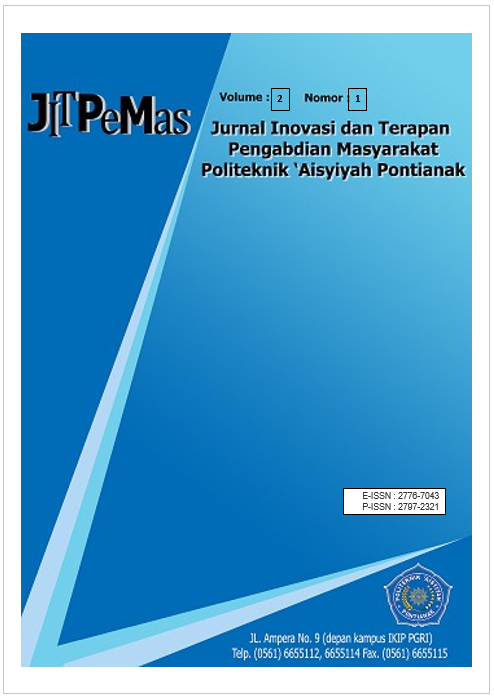PEMERIKSAAN SKRINING PENDENGARAN PADA ANAK DENGAN GANGGUAN BICARA
DOI:
https://doi.org/10.35721/jitpemas.v2i1.40Keywords:
Gangguan Pendengaran, Skrining, Deteksi Dini, IntervensiAbstract
As many as 328 million adults and 32 million children worldwide are affected by hearing loss. Hearing loss can occur as a congenital abnormality due to maternal rubella infection in the mother, complications during childbirth, complications of various conditions such as meningitis and chronic ear infections, use of ototoxic drugs, excessive noise exposure, and aging. Half cases of hearing loss can be avoided through primary prevention. Infants with significant congenital conductive hearing loss should be identified at 3 months of age and should get appropriate intervention as early as six months. Early detection, particularly at six months of age followed by proper interventions within two months, provided better language development, speech, and social emotions. Speech and language disorders in children are generally caused by hearing loss. Screening of hearing function needs to be done in infants or children before the age of two for early detection and intervention, considering the best brain development occurs at the age of 2-4 years. In this screening program, nine children had severe sensorineural hearing loss and needed further treatment with hearing aids or cochlear implants followed by speech therapy, while one child only needed speech therapy to improve his speech skills.

















